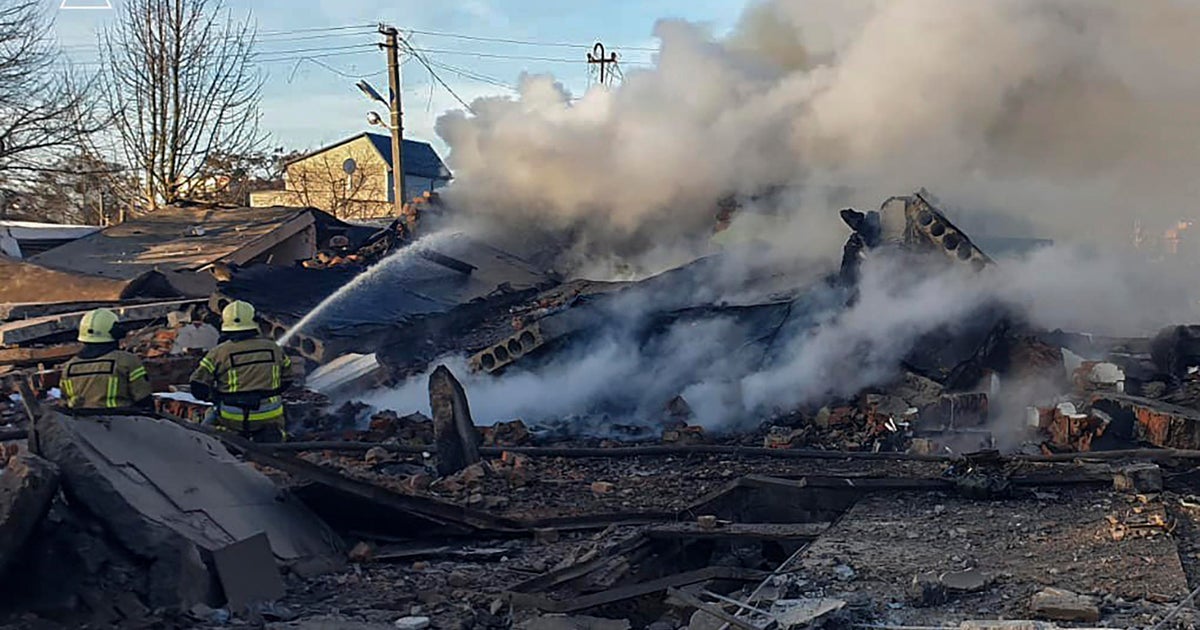U.S. moves parts of controversial missile defense to South Korea
SEOUL, South Korea -- U.S. missile launchers and other equipment needed to set up a controversial missile defense system have arrived in South Korea, the U.S. and South Korean militaries said Tuesday, a day after North Korea test-launched four ballistic missiles into the ocean near Japan.
The plans to deploy the Terminal High-Altitude Area Defense system, or THAAD, within this year have angered not only North Korea, but also China and Russia, which see the system’s powerful radars as a security threat.
Washington and Seoul say the system is defensive and not meant to be a threat to Beijing or Moscow.
The U.S. military said in a statement that THAAD is meant to intercept and destroy short and medium range ballistic missiles during the last part of their flights.
The U.S. Pacific Command described the THAAD system as “a strictly defensive capability” that “poses no threat to other countries in the region.” It said in a statement that the deployment “contributes to a layered missile defense system” and enhances defense against missile threats from North Korea.
“Continued provocative actions by North Korea, to include yesterday’s launch of multiple missiles, only confirm the prudence of our alliance decision last year to deploy THAAD to South Korea,” Adm. Harry Harris, head of the U.S. Pacific Command, said in the statement.
Some South Korean liberal presidential candidates have said that the security benefits of having THAAD would be curtailed by worsened relations with neighbors China and Russia.
Russia’s Foreign Ministry said Tuesday the deployment is bringing the situation in the Korean peninsula into a stalemate, Russian news agency Interfax said, according to the Reuters news agency.
China said it will take unspecified measures against a U.S. missile system being deployed in S. Korea, and warned that Washington and Seoul will bear the consequences. A Foreign Ministry spokesman said at a regular briefing Tuesday that China “firmly opposes” the deployment of the missile defense system.
China’s condemnation of South Korean plans to deploy THAAD has triggered protests against South Korean retail giant, Lotte, which agreed to provide one of its golf courses in southern South Korea as the site of THAAD. The South Korean government also raised worries about a reported ban on Chinese tour groups visiting the country.
An official from South Korea’s Defense Ministry, who didn’t want to be named, citing office rules, said that the equipment that arrived in South Korea included launchers, but didn’t confirm how many.
While South Korea’s media speculates that the THAAD deployment could be completed by as early as April, the ministry official couldn’t confirm such reports but said the plan was to have the system operational as soon as possible.
On Monday, North Korea fired four ballistic missiles in an apparent protest against ongoing U.S.-South Korean military drills that it views as an invasion rehearsal. The missiles flew about 620 miles on average, three of them landing in waters that Japan claims as its exclusive economic zone, according to South Korean and Japanese officials.
In a statement on Monday, the White House said President Trump spoke with Japanese Prime Minister Shinzo Abe and Acting President of South Korea Hwang Kyo-Ahn about North Korea’s launch of ballistic missiles.
“President Trump emphasized the United States’ ironclad commitment to stand with Japan and South Korea in the face of the serious threat posed by North Korea,” the statement said. “He emphasized that his Administration is taking steps to further enhance our ability to deter and defend against North Korea’s ballistic missiles using the full range of United States military capabilities.”
The North’s state media on Tuesday said leader Kim Jong Un supervised a ballistic rocket launching drill, a likely reference to the four launches reported by Seoul and Tokyo. Involved in the drills were artillery units tasked with striking “U.S. imperialist aggressor forces in Japan,” according to the Korean Central News Agency.
South Korea’s Joint Chiefs of Staff said that the missiles fired by the North were believed to be “improved versions” of Scud missiles. South Korean experts say North Korea’s extended-range Scuds and mid-range Rodong missiles are capable of hitting Japan, including U.S. military bases in Okinawa.
Kim “ordered the KPA (Korean People’s Army) Strategic Force to keep highly alert as required by the grim situation in which an actual war may break out anytime,” a KCNA dispatch said.




